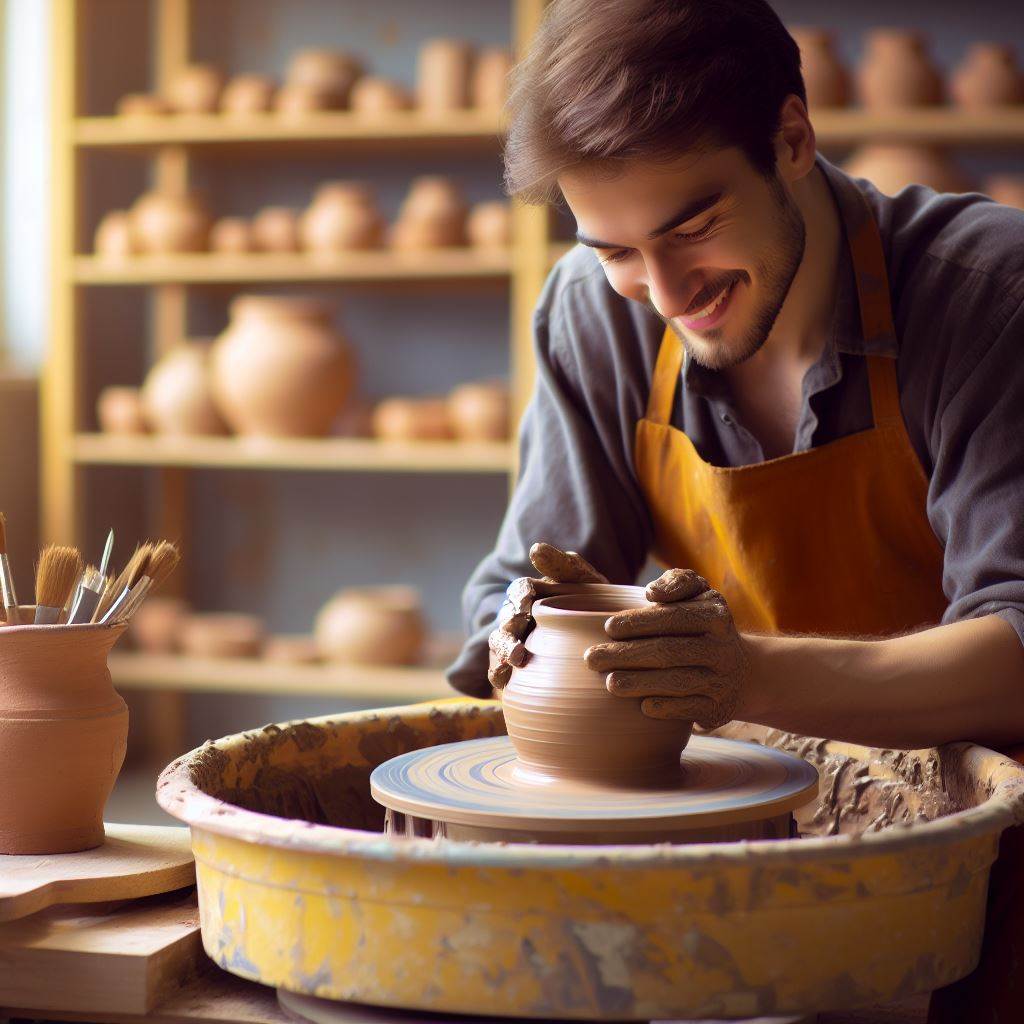Understanding Chronic Pain in the Pottery Studio
Chronic pain while working in the pottery studio can be characterized by persistent discomfort or pain that lasts for an extended period of typically three months or more, beyond the normal healing time of an injury or illness.
Unlike acute pain, which serves as a warning signal of tissue damage, chronic pain often persists even after the initial injury or condition has healed. It can result from various underlying causes, including injuries, illnesses, medical conditions, or nerve damage.
One of the distinguishing features of chronic pain while working on the pottery wheel is its complex nature, involving physical, emotional, and psychological components. Chronic pain can significantly impact a person’s art as well as affecting their ability to perform other daily activities such as work, socializing, and sleep. It may lead to feelings of frustration, helplessness, anxiety, depression, and isolation, further exacerbating the pain experience.
Chronic pain can manifest in different forms, such as musculoskeletal pain, neuropathic pain, or visceral pain, and it can occur in specific areas of the body or be widespread. Common conditions associated with chronic pain include fibromyalgia, chronic back pain, arthritis, migraines, nerve damage, and repetitive stress syndrome
Managing chronic pain often requires a comprehensive approach that addresses both the physical and emotional aspects of pain. Treatment strategies may include medications, physical therapy, acupuncture, cognitive-behavioral therapy, relaxation techniques, and lifestyle modifications.
Despite the challenges posed by chronic pain, individuals can explore various coping strategies and complementary therapies to help alleviate symptoms and improve their overall well-being.
Pottery Making for Healing Chronic Pain:
Engaging in pottery lessons can offer therapeutic benefits for individuals living with chronic pain, providing a creative outlet for self-expression, relaxation, and distraction from pain symptoms. The tactile nature of working with clay can be particularly soothing, allowing individuals to focus their attention on the sensory experience of shaping, molding, and manipulating the clay.
Pottery lessons provide a structured and goal-oriented activity that encourages individuals to focus on the present moment, promoting mindfulness and reducing stress and anxiety associated with chronic pain. The process of creating pottery pieces allows individuals to channel their energy into a productive and meaningful endeavor, fostering a sense of accomplishment and fulfillment.
Working with clay during pottery lessons can help individuals improve their fine motor skills, hand-eye coordination, and grip strength, which may be affected by chronic pain conditions. The repetitive motions involved in pottery activities can also serve as a form of gentle exercise, promoting joint mobility and reducing stiffness in affected areas.
Pottery lessons offer a supportive and non-judgmental environment where individuals can connect with others who share similar experiences of living with chronic pain. Sharing their journey and creative expressions with fellow participants can foster a sense of community, empathy, and understanding, reducing feelings of isolation and loneliness.
The creative process of pottery-making allows individuals to explore and express their emotions, thoughts, and experiences through artistic means, providing an outlet for self-expression and reflection. Creating pottery pieces that reflect their personal narrative and identity can empower individuals to reclaim a sense of agency and control over their lives despite the challenges posed by chronic pain.
Pottery lessons can be adapted to accommodate individuals with varying levels of physical abilities and limitations, making it accessible to a wide range of people living with chronic pain. Instructors can provide personalized guidance and support, tailoring the activities to meet the unique needs and preferences of each participant.
Participating in pottery lessons can provide a welcome distraction from the constant focus on pain, offering moments of respite and enjoyment amidst the challenges of living with a chronic condition. The creative process of pottery-making can engender a sense of joy, curiosity, and wonder, helping individuals cultivate a more positive outlook on life despite the presence of pain.
Pottery as a form of art therapy can promote self-discovery and personal growth, encouraging individuals to explore new interests, talents, and creative potentials beyond their pain experiences. Engaging in pottery activities can foster a sense of purpose and meaning, reigniting passions and aspirations that may have been overshadowed by chronic pain.
The tangible outcomes of pottery lessons, such as the creation of pottery pieces and artworks, serve as tangible reminders of individuals’ resilience, creativity, and capacity for healing. Displaying or gifting their pottery creations can evoke a sense of pride, accomplishment, and validation, reinforcing their sense of self-worth and value beyond their pain condition.
In conclusion, pottery lessons offer a holistic approach to healing for individuals living with chronic pain, addressing their physical, emotional, and social needs through the therapeutic benefits of creative expression, mindfulness, community support, and personal empowerment. By embracing pottery as a form of self-care and self-discovery, individuals can reclaim control over their lives and cultivate a sense of well-being and vitality despite the challenges posed by chronic pain.

